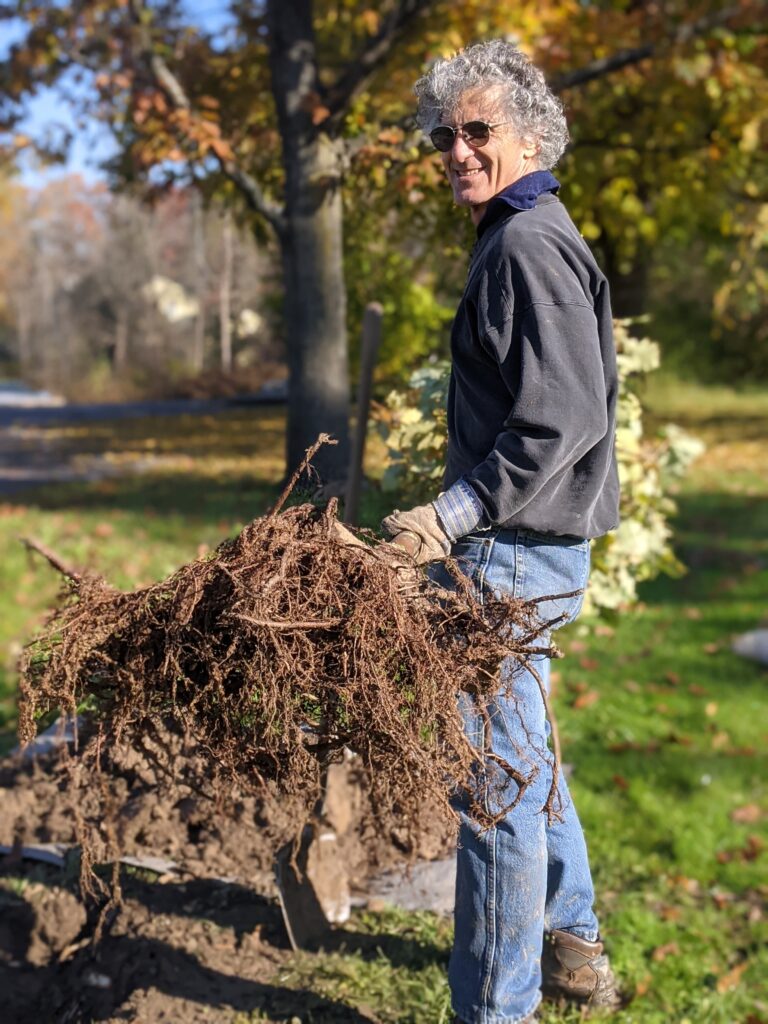Shade Tree Advisory Committee

- Fred Cowett, Village Forester
- Brent Cross
- Hazel Gunn (Kendal at Ithaca)
- Scott Howard
- Kent Hubbell
- James Marshall
- Mayor Linda Woodard
The Shade Tree Advisory Committee, together with the Village Forester, is responsible for the planting, maintenance, protection and removal of public trees and shrubs located within the right-of-way of any public street or in public parks or on other Village property. It was responsible for the drafting of the Village’s Street Tree and Shrub Protection and Planting Law and for the Village wide street tree inventory conducted by Davey Tree in 2019 and updated on a periodic basis.
Tree City USA
Since 2013, Cayuga Heights has earned recognition as a Tree City USA by the Arbor Day Foundation, a national organization dedicated to promoting the benefits that trees provide. To achieve Tree City recognition, a community must meet the following four criteria:
- Maintain a tree board or department
- Have a community tree ordinance or law
- Spend at least $2 per capita annually on urban forestry
- Celebrate Arbor Day
Learn more about the Tree City USA program and the benefits provided by trees here.
View the Village of Cayuga Heights Street Tree and Shrub Protection and Planting Law here.
Street Tree Inventory
In 2019, the Shade Tree Advisory Committee received a grant from the NYS DEC Urban and Community Forestry program to conduct an inventory of trees on Village streets, in parks, and on other Village property. The inventory was conducted by Davey Tree in the summer of 2019 and the data from the inventory, which are updated periodically, have been used to manage existing trees and to inform planting decisions.
Download the inventory as a GIS shapefile or a Google Earth kmz file
Planting Trees and Shrubs in the Village’s Public Street Right-of-Way
The public street right-of-way includes the land extending from the paved area of a Village public street to the owner’s property line. This land belongs to the Village. A property owner who wishes to plant a tree or shrub in the public street right-of-way must first obtain a permit from the Village Forester. A property owner who plants a tree or shrub in the public street right-of-way without a permit approved by the Village Forester may be required to remove the tree at the property owner’s expense. Requests from property owners that the Village plant new trees or shrubs in the public street right-of-way adjacent to their property will be considered by the Village Forester and accommodated in accordance with funding availability and planting priorities set by the Village Forester in consultation with the Village’s Shade Tree Advisory Committee and Department of Public Works.
Mulching Trees and Mulch “Volcanoes”
Maintaining three inches of mulch within a tree’s dripline and away from its trunk is good arboricultural practice. Over-mulching – adding more than three inches and piling it against the trunk – is not and can kill a tree.
The dos and don’ts of mulching trees
Invasive Insects and Pathogens
For questions regarding trees and shrubs in the Village’s public street right-of-way, please contact the Village Forester at fcowett@cayuga-heights.ny.us.
Planting the Parkway
The Village Forester initiated a project in October 2023 involving a Cornell Landscape Architecture Department class looking at future tree plantings on The Parkway where 160 mature Pinus strobus (Eastern white pine) are located on both sides of the Village’s 66 foot right-of-way, creating an allée of pines in many places. The past year saw several weather related failures of pines accompanied by electrical service interruptions, and the subsequent removal by a NYSEG contractor of these pines and of additional white pines to avoid future service interruptions begged the question about a long term plan for tree plantings along the street. In short, if white pines are removed, what should they be replaced with? Are white pines a distinctive feature of the Village and intrinsic to its identity or should other tree species be planted? The results of the project recommended a bit of both. The character of The Parkway specifically and of Cayuga Heights more generally is of a municipality that is heavily forested, but this character can be sustained with tree species other than Pinus strobus such as Metasequoia glyptostroboides (dawn redwood). Additional thought was given to planting the treelawn on the west side of the street, most of which isn’t planted, with shrubs to discourage parking vehicles there, and also where applicable creating bioswales to reduce stormwater runoff. All in all, although the project didn’t produce a plan that was immediately actionable, which was not unexpected, it did start the ball rolling and resulted in outreach to some Village residents living along the street.
